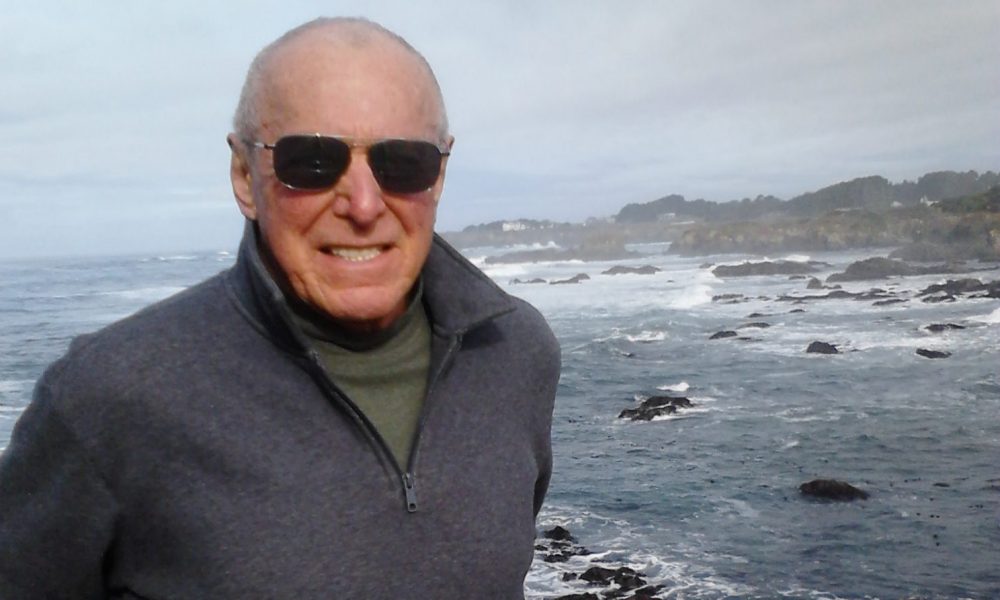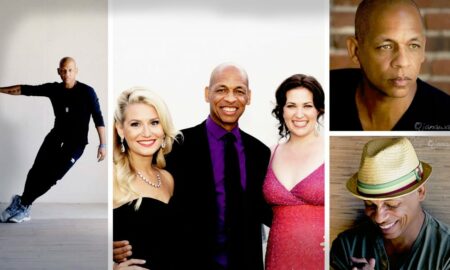

Today we’d like to introduce you to Steve Bassett.
Steve, let’s start with your story. We’d love to hear how you got started and how the journey has been so far.
I was born, raised and schooled in New Jersey before joining the dwindling number of itinerant newsmen roaming the countryside in search of, well just about everything. Sadly, our breed has vanished into the digital ether.
Raised a Catholic in Newark’s racially mixed Third Ward and, although far removed during a career as multiple award-winning journalists, I have always been proud of the sobriquet Jersey Guy. Polish on my mother’s side and Montenegrin on my father’s, with grandparents who spoke little or no English, my early outlook was ethnic and suspicious. It was a world in which cabbage, potatoes, sausage and heavy homemade dumplings reigned. My first stop was “The Long Branch Daily Record” on the New Jersey shore.
The city had recently thrown out a corrupt commission form of government but nepotism was still king. New Jersey mobsters loved the place. It was one of their favorite watering holes. A mafia boss was gunned down in a nightclub not far from the paper. Great fun for a cub reporter. Curiosity got the better of me with my next choice the “Pekin Daily Times” located in central Illinois. Now a respected newspaper, it had once been the official voice of the Ku Klux Klan during the 1920’s. Pekin had saved its bacon during the Depression by tacitly approving two time-honored money makers, prostitution and gambling, earning an eight-page spread in “Life.”
Next on my list was the “Salt Lake Tribune.” The Pulitzer Prize winner was then and still is, considered one of the best daily newspapers west of the Rockies. My coverage of the invective-laden contract talks between the United Mine Workers and the three copper mining giants led to my recruitment by the Associated Press. After a four-year stint with the AP in Phoenix, I garnered a plum assignment as Special Urban Affairs investigative reporter in San Francisco. My turf included the Black Panthers, the Patty Hearst kidnapping, the People’s Park violence at Berkeley, and the crazy world of Haight-Ashbury.
My five-part series on the Wah Ching gained national attention by exposing the Chinese youth gang as the violent instrument of Chinatown’s criminal bosses. Then came CBS television news in Los Angeles, three Emmy Awards for my investigative documentaries, and the prestigious Medallion Award presented by the California Bar Association for “Distinguished Reporting on the Administration of Justice.” Along the way, I wrote, “The Battered Rich” (Ashley Books) exposing seldom discussed but widespread marital abuse among the affluent.
My second non-fiction book, “Golden Ghetto: How the Americans and French Fell In and Out of Love During the Cold War,” is a gift from the people of Berry where my wife, Darlene, and I purchased an ancient farm property in the tiny French village of Bouges Le Chateau. After hearing countless local stories about a huge U.S. Air Force base that had been abandoned for forty years, I sensed that there was a timeless story to be told. I uncovered a sixteen-year French and American love affair and gained the trust of the Berrichon, provincial and traditionally skeptical of outsiders.
The result was a collective memoir that rekindled memories which had lain dormant for decades. These tales defined trust, hope, renewal, prosperity and finally the discovery that it was all a delusion. Then it was time for me to make a stab at fiction, and this April, “Father Divine’s Bikes” was launched. A gangster war, three murders, a gun-toting paperboy, and the numbers racket punctuate the tragic story of two white altar boys adrift while the Second Great Migration engulfs them. My wife Darlene and I currently divide our time between Bouges Le Chateau and Placitas, New Mexico.
Great, so let’s dig a little deeper into the story – has it been an easy path overall and if not, what were the challenges you’ve had to overcome?
In a long and many-faceted career, it’s only natural that there have been some bumps along the way. Three are worth mentioning because each required a great deal of introspection: bigotry, professional integrity and physical setback. As a kid, I lived in a deeply entrenched white enclave that was being squeezed by the mass migration of blacks, and escape routes for poor, largely under-educated, ethnic whites closed rapidly.
Recent immigrants themselves, they were threatened by an unknown world for which few of them were prepared.
Hidden in the baggage that immigrants, like my grandparents, brought from the old world was the latent time bomb of fear, a bequest passed down from generation-to-generation. Blacks were the embodiment of that fear. Until the pink slips and severance checks started showing up on payday, white hatred of blacks was seldom, if ever, expressed in my family, or by other neighborhood parents. With Jews it was different, antisemitism was open and severe. Only the worst was to be believed. Jews were the slumlords, owned Newark’s three biggest department stores, and therefore, were able to fix prices, and insulated themselves in the best schools and neighborhoods.
I was six years old when I ventured a few blocks from our family apartment on South 10th Street and began playing with a boy I only remember as Josh. Two hours later, I was back on home turf where a sneering Frankie Scalari spit out, “So you got tired playing with the Jew boy. He better not bring his k**e ass over here, if you know what’s good for you.”
Even among six and seven-year-olds, an ethnic party-line had to be followed, or else.
Seven years later, I was a member of an all-white Police/Firemen’s Athletic League (PFAL) baseball team. We were all from the same neighborhood, and the team couldn’t be worse. Our black coach, who everyone addressed as Mr. Saunders, sized us up after three lopsided losses and began bringing in black recruits from Morton Street Elementary. We began to win as one white kid after another bailed. Eventually, I was the only white player remaining. After one big win, I joined my former teammates engrossed in a game of mumblety-peg.
The game involved flipping a pocketknife end-over-end so it would stick in the ground as close as possible to the player’s foot. The winner was the one who came closest. He then drove a wooden peg four inches into the ground and the loser had to pull it out with his teeth. There was deafening silence when I challenged the winner, Jimmy Pecklett.
Jimmy looked up from where he was seated on the ground and said, “You gotta be f**ing kidding? We don’t play with ni***r lovers.” Sadly, I was to learn during my career, that Frankie’s and Jimmy’s hatred did not originate in a vacuum. As a young reporter, I discovered that censorship in the hands of the powerful is insidious and can be accomplished with relative ease.
Turn the clock back to the late evening of July 25, 1967, in Phoenix, where racial tension had been festering for years amid allegations of police brutality. The city schools were segregated, poverty and joblessness were endemic. I was working the late-night shift at the AP Bureau, when violence erupted in the heart of the city’s black neighborhood, the start of a three-day rampage. Our six-man bureau would be put to an unexpected and unwanted test as a result of a decision by the media mogul, Eugene C. Pulliam.
His empire included the city’s newspapers, a local television station, and news outlets in nine states, enough muscle to earn him a seat on the AP Board of Directors. That night he decided the fire-bombing of a police paddy wagon, sniper shots and isolated looting was a disturbance that could be handled with a minimum of force, and his news outlets would handle it accordingly.
In a few months, overwhelmingly white snowbirds, a major source of tourist income for Arizona, would begin their early migration from the north. Even a whisper that a race riot had occurred would be suppressed. First inkling that something was awry came when Bureau Chief, Tom Aden, ashen and obviously distraught, brushed past me into our cramped bureau and grabbed the telephone. He had been given the word at home by a Pulliam minion that the AP was on its own. We were denied use of the newspapers’ darkroom and photo transmission wires, off-duty photographers were out of bounds, as was access to their news stories.
This flew in the face of what made the AP work, a cooperative effort between local bureaus and news outlets. Aden was forced to import from Los Angeles a photographer and everything necessary to set-up a darkroom and photo transmission facility in a nearby motel. Our news copy continued to flow, and after a day’s delay, so did our photos.
During the next three days, a curfew was imposed, several police cars, homes and a pickle factory were torched. Looting was widespread. A seventeen square block area was sealed off as Mayor Milton Graham circled the area and in an open car bullhorn residents that the senseless destruction would be contained. Backing him up was a cordon of 376 policemen, joined by sheriff’s deputies, state highway patrolmen, firefighters and police cadets identified by their white steel helmets.
Graham followed Pulliam’s lead that this was not a riot or even a disturbance but was only a “civil disobedience.” When the curfew was lifted, 280 “disobedient” residents were arrested including 38 juveniles. A riot that really wasn’t a riot was over. Despite Pulliam’s efforts, it didn’t escape the attention of President Johnson’s Kerner Commission, who labeled it “a major disturbance,” and summoned Graham to Washington to describe what really happened.
In 1967, one young reporter learned an enduring lesson that censorship can originate anywhere, and when hidden amid today’s insatiable, often inane social media babble, it’s easy to be disguised. After the initial shock and disbelief, the third bump in the road had to be faced for what it was – the onset of blindness. Overnight, macular degeneration (AMD) had destroyed the central vision of my left eye and blurred the vision in my right eye. I was legally blind.
That was thirty years ago. My wife’s support has never wavered. With her help, a counterattack was put in place. AMD could not be sugar-coated, it was incurable and had to be coped with. Sure, I had to turn in my driver’s license and make other compromises, but giving up writing was not one of them. With the help of magnification, voice-activated computer commands, and reading software, along with an assistant, I’ve been able to complete one non-fiction book, a novel, and well on my way to completing its sequel.
Steve Bassett – what should we know? What do you guys do best? What sets you apart from the competition?
Right now my business is writing fiction. FATHER DIVINE’S BIKES is a novel that melds character, time and place into a mosaic that exposes the dark underbelly of Newark, a city that profited greatly during World War II, but is unable to cope with the peace that brings joblessness, despair and crime. Police-protected bookmakers and numbers banks share the crime-infested Third Ward with Jewish bathhouses, Voodoo shamans, Yiddish pushcart vendors and abandoned mansions. The numbers racket is considered little more than a parlor game. Corruption is endemic.
In the autumn of 1945, a battle rages when the city’s competing mobs end their truce. When it gets bloody, other criminal forces are ready to move in. Bookies using Father Divine’s controversial International Peace Mission Movement as a front, recruit JOEY BANCIK and RICHIE MAXWELL to run numbers under the guise of newspaper routes. The two altar boys quickly realize they are players in a dangerous game, but the easy money is too good to pass up.
Contact Info:
- Website: www.stevebassettworld.com
- Phone: 505-867-3558
- Email: medplus1@comcast.net



Image Credit:
Jamie Clifford
Getting in touch: VoyageATL is built on recommendations from the community; it’s how we uncover hidden gems, so if you know someone who deserves recognition please let us know here.



















